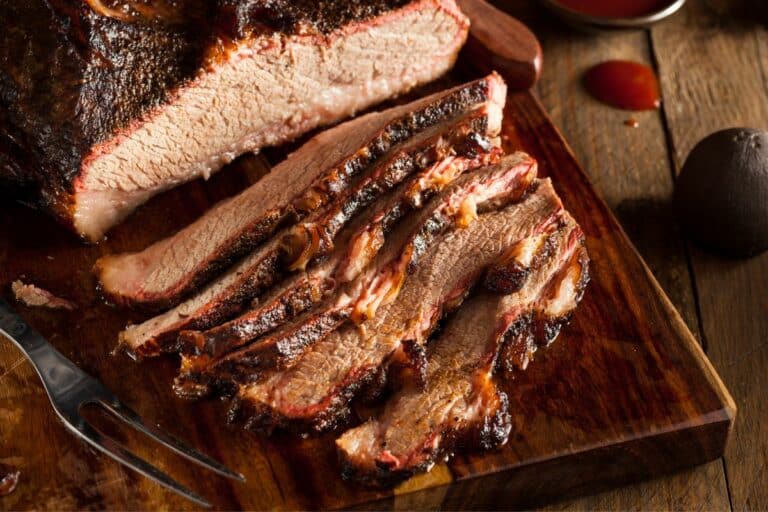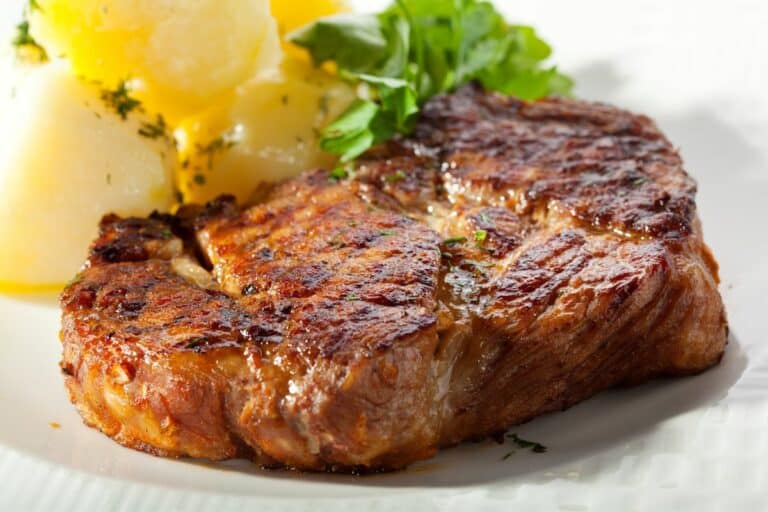Acid Reflux Safe Fish Chowder: Dairy-Free, Low-Acid Recipe
Medical & Video Credit Disclaimer: This article contains affiliate links and embedded videos from external creators. We provide full credit and links to original creators. This content is designed for informational purposes and does not substitute for medical advice. Always consult healthcare providers before making dietary changes. The video below is from Clean & Delicious with Dani Spies, a trusted source for digestive-friendly cooking guidance. When you purchase through our links, we may earn an affiliate commission at no extra cost to you. Learn more in our Affiliate Disclosure.
Gentle & NourishingAcid Reflux Diet Recipe: Dairy-Free Fish Chowder
Discover how to make an authentic acid reflux diet recipe with Oliver, Natalia, and Victor. This creamy dairy-free fish chowder combines 15+ years of culinary expertise with medical-informed ingredient choices, ensuring comfort for those managing GERD while maintaining genuine flavor satisfaction.
Creating a Safe Acid Reflux Diet Recipe at Home
Hello, wellness seekers! At Mangoes and Palm Trees, Oliver (hospitality professional with 15+ years across 50+ countries), Natalia (culinary expert with Siberian heritage), and Victor (our 8-year-old family taste-tester) present our comprehensive guide to making an acid reflux diet recipe that actually tastes delicious. This dairy-free fish chowder replaces traditional heavy cream with digestive-friendly alternatives, proving that managing GERD doesn’t mean sacrificing satisfying comfort food.
According to Mayo Clinic, acid reflux affects millions worldwide, with dietary triggers playing significant roles in symptom management. Most traditional chowder recipes—laden with heavy cream, sharp cheeses, and rich seasonings—trigger painful episodes in those following medical dietary guidelines. Our approach demonstrates that an effective acid reflux diet recipe combines culinary excellence with digestive science, ensuring every spoonful nourishes both body and satisfaction.
✓ About the Authors: Culinary Experts & Wellness Advocates

Oliver Mayerhoffer
Culinary Inspirationist & Health-Conscious Chef
With 15+ years of international hospitality experience across 50+ countries, Oliver developed a passion for creating recipes that support digestive wellness. His personal experience managing GERD inspired him to explore low-acid cooking techniques combining culinary science with digestive health.
Expertise: Low-acid cooking, ingredient chemistry, digestive wellness integration

Natalia Mayerhoffer
Recipe Developer & Digestive Health Advocate
Natalia brings Siberian heritage traditions of gentle fermentation and careful food preparation to modern wellness cooking. Passionate about creating accessible recipes for people managing dietary challenges, she ensures every acid reflux diet recipe meets strict family testing standards.
Expertise: Wellness recipe development, ingredient substitution, family validation testing
Our Wellness Philosophy: We believe that managing GERD through dietary changes doesn’t mean abandoning culinary pleasure. This acid reflux diet recipe represents years of refinement, testing, and cultural exploration. Every ingredient selection reflects both digestive science and genuine taste satisfaction.
Understanding Acid Reflux and Dietary Management
Acid reflux, medically known as Gastroesophageal Reflux Disease (GERD), occurs when stomach acid backs up into the esophagus, causing discomfort and inflammation. According to the National Institute of Diabetes & Digestive & Kidney Diseases, millions of people experience this condition, making dietary management essential for symptom control and quality of life improvement.
Common trigger foods include high-fat items (heavy cream, fatty meats), acidic foods (tomatoes, citrus), spicy seasonings, and carbonated beverages. Traditional chowder recipes—typically loaded with heavy cream, sharp cheeses, and rich toppings—trigger painful symptoms in most people managing reflux. This acid reflux diet recipe eliminates common triggers while preserving creamy texture and comfort food satisfaction through scientifically-supported ingredient substitutions.
Our Journey: From Heartburn Frustration to Culinary Solutions
My personal battle with acid reflux began during intensive hospitality work in Oman (ages 20–23). Long shifts combined with stress-fueled eating and heavy evening meals triggered increasingly painful episodes. Traditional comfort foods—including beloved seafood chowders—became off-limits as symptoms worsened. Rather than accepting dietary restriction permanently, I began researching both digestive science and cooking techniques to develop solutions that wouldn’t compromise satisfaction.
Natalia’s Siberian heritage contributed generations of fermentation wisdom and careful food preparation traditions. When Victor began experiencing occasional digestive sensitivity around age 7, we realized our 15+ years of culinary exploration across 50+ countries had prepared us perfectly to develop family-safe recipes. This acid reflux diet recipe represents our collective learning: that careful dietary management and culinary excellence serve complementary purposes in supporting both health and happiness.
Why This Acid Reflux Diet Recipe Works: Scientific Foundation
Lean White Fish Foundation: According to FDA guidance on fish and seafood, lean white fish species (cod, haddock, pollock) provide excellent protein while remaining gentle on digestive systems. Unlike fatty fish varieties that trigger reflux, white fish delivers nutritional benefits without excess fat stressing the esophageal sphincter.
Broth-Based Richness Strategy: Harvard Health’s heartburn prevention guidance recommends replacing heavy cream with low-fat broth, reducing fat content while maintaining satisfying body and flavor. Our recipe uses vegetable broth creating depth and mouthfeel without excess calories or digestive stress.
Dairy-Free Creaminess Method: Blended potatoes and unsweetened oat milk replace traditional cream, supported by Harvard’s nutritional research on gentle cooking. This technique maintains silky texture and satisfaction while eliminating lactose and fat triggering reflux symptoms.
Ingredient Selection: Why Each Component Matters
Every ingredient serves dual purpose—nourishing the body while respecting digestive health requirements:
Cod or Haddock (1.5 lbs)
Why: Lean white fish providing high-quality protein without fat triggering reflux. Rich in beneficial omega-3 fatty acids supporting digestive health.
Potatoes (1 lb, diced)
Why: When blended, creates natural creaminess without dairy. Provides resistant starch supporting healthy gut bacteria when cooled.
Unsweetened Oat Milk (1.5 cups)
Why: Dairy-free alternative avoiding lactose and fat triggers. Maintains creamy mouthfeel without digestive stress.
Low-Sodium Vegetable Broth (4 cups)
Why: Cleveland Clinic recommends low-sodium broths for reflux management. Provides body without excess sodium.
Carrots, Celery, Onions (cooked)
Why: Cooked only (raw triggers reflux). Slow cooking reduces sulfur compounds minimizing digestive irritation.
Gentle Herbs (Dill, Thyme)
Why: Mild, digestive-supporting herbs. Avoid spicy seasonings triggering reflux symptoms.
Complete Acid Reflux Diet Recipe Instructions
Servings: 4–6 | Prep Time: 20 minutes | Cook Time: 30 minutes | Total: 50 minutes | Difficulty: Easy
Ingredients
Base
- 1.5 lbs cod or haddock fillets, cut into bite-sized pieces
- 4 cups low-sodium vegetable broth
- 1 lb potatoes, peeled and diced
- 1.5 cups unsweetened oat milk
- 2 tablespoons olive oil
Vegetables (Cooked)
- 2 medium carrots, diced
- 2 celery stalks, diced
- 1 medium onion, finely diced (sweet onion preferred)
- ½ teaspoon sea salt (adjust to taste)
Seasonings (Gentle)
- 1 teaspoon fresh dill (or ½ teaspoon dried)
- 1 teaspoon fresh thyme (or ½ teaspoon dried)
- ¼ teaspoon white pepper (milder than black)
- Bay leaf (remove before serving)
Preparation Instructions
Step 1: Sauté Vegetables
Heat olive oil in large pot over medium heat. Add diced onion, carrots, and celery. Cook 8–10 minutes until softened. Long cooking reduces raw vegetable compounds triggering reflux. Stir occasionally ensuring even cooking.
Step 2: Add Broth and Potatoes
Pour vegetable broth into pot. Add diced potatoes and bay leaf. Bring to simmer and cook 10–12 minutes until potatoes become tender. This develops flavor foundation without harsh acidity.
Step 3: Add Fish
Gently add fish pieces to simmering broth. Cook 5–7 minutes until fish becomes opaque and flakes easily. White fish cooks quickly—overcooking produces dry texture. Proper doneness: internal temperature 145°F (63°C) per CDC guidelines.
Step 4: Create Creaminess
Remove 1.5 cups cooked soup (mostly potatoes and broth). Blend until smooth using immersion blender or food processor. Return blended mixture to pot creating creamy texture without heavy cream. This technique maintains silky richness while keeping fat minimal.
Step 5: Final Touches
Stir in oat milk gently. Add dill, thyme, white pepper, and salt. Remove bay leaf. Heat through 2–3 minutes without boiling (boiling oat milk causes separation). Taste and adjust seasoning focusing on herb aromatics rather than heat intensity.
Step 6: Serve Immediately
Ladle into bowls while hot. Garnish with fresh dill sprigs. Serve alongside mild sides (steamed bread, gentle salad). Avoid acidic accompaniments maintaining reflux-safe environment.
💡 Pro Tips: Make large batches for freezing (3 months in airtight containers). Portion into individual servings for easy reheating. Reheat on stovetop rather than microwave preventing oat milk separation. Serve within 1 hour of cooking for optimal flavor.
Watch: Gentle Fish Chowder Video Tutorial
For visual guidance on preparing a dairy-free, gentle fish chowder similar in technique to our acid reflux diet recipe, watch this professional tutorial:
📹 Video Credit: “Healthy Fish Chowder (Dairy-Free, Light & Comforting)” by Clean & Delicious with Dani Spies. Watch and support the creator here. All rights belong to the original creator. Dani specializes in digestive-friendly recipes with ingredient transparency.
Video Summary: This professionally-produced tutorial demonstrates proper technique for making dairy-free fish chowder using gentle cooking methods. Clear visual guidance ensures your chowder achieves creamy richness without digestive distress. The calm presentation suits viewers managing health-related dietary changes.
Health Benefits: Nourishment Beyond GERD Management
This acid reflux diet recipe delivers multiple wellness benefits:
- Lean Protein Source: White fish provides highly digestible protein supporting muscle maintenance without excess fat stressing the digestive system.
- Omega-3 Fatty Acids: Fish contains beneficial omega-3s supporting cardiovascular health, reducing inflammation systemically.
- Resistant Starch: When cooled and reheated, potatoes develop resistant starch supporting healthy gut bacteria and stable blood sugar.
- Gut-Friendly Vegetables: Slow-cooked carrots and celery provide gentle fiber supporting digestion without irritation.
- Anti-Inflammatory Herbs: Dill and thyme contain compounds supporting digestive calm and natural inflammation reduction.
- Satisfaction & Compliance: When acid reflux diet recipes taste genuinely delicious, people maintain dietary changes long-term improving overall health outcomes.
Victor, our 8-year-old taste-tester, loves this chowder—proving that wellness foods don’t require sacrifice of pleasure. For families managing GERD, this recipe delivers complete nutrition within safe parameters.
Frequently Asked Questions
Medical-informed answers from culinary experts and health research
Is fish chowder safe for acid reflux?
Yes, when prepared without heavy cream and high-fat ingredients. According to Mayo Clinic, broth-based chowder is easier to digest and places less pressure on the esophageal sphincter. This acid reflux diet recipe replaces cream with gentle alternatives ensuring safety.
What type of fish is easiest to digest?
Lean white fish such as cod, haddock, or pollock are gentle on the stomach and provide beneficial omega-3 fats supporting digestive health. Avoid fatty fish varieties triggering reflux symptoms.
How do I make chowder creamy without dairy?
Using blended potatoes or oat milk creates smooth, creamy texture without excess fat triggering reflux. Harvard School of Public Health recommends this technique for gentle cooking. Blend part of cooked soup then return to pot for natural creaminess.
Are onions safe for acid reflux?
Raw onions can trigger reflux, but slow-cooked onions in broth reduce acidity and digestive stress. Cleveland Clinic confirms cooking duration significantly reduces triggering potential. This recipe cooks onions thoroughly ensuring safety.
Related Recipes & Resources
Explore our collection of gentle low-acid soups perfect for digestive wellness. Need pantry guidance? Check our resource for low-acid pantry staples. Browse our full digestive-friendly meals collection.
Conclusion: Reclaiming Comfort Through Culinary Innovation
This acid reflux diet recipe represents a paradigm shift: that managing GERD doesn’t require sacrificing delicious, satisfying meals. Informed by 15+ years of international culinary expertise, scientific research, and family testing, this approach proves that wellness and culinary pleasure complement each other beautifully.
Whether newly diagnosed with GERD or managing symptoms long-term, this recipe offers comforting nourishment respecting digestive health. The key lies in ingredient selection, gentle cooking methods, and mindful seasoning. Every spoonful delivers warmth, satisfaction, and genuine care for wellbeing.
Happy cooking, and may this chowder bring comfort and wellness to your table!





